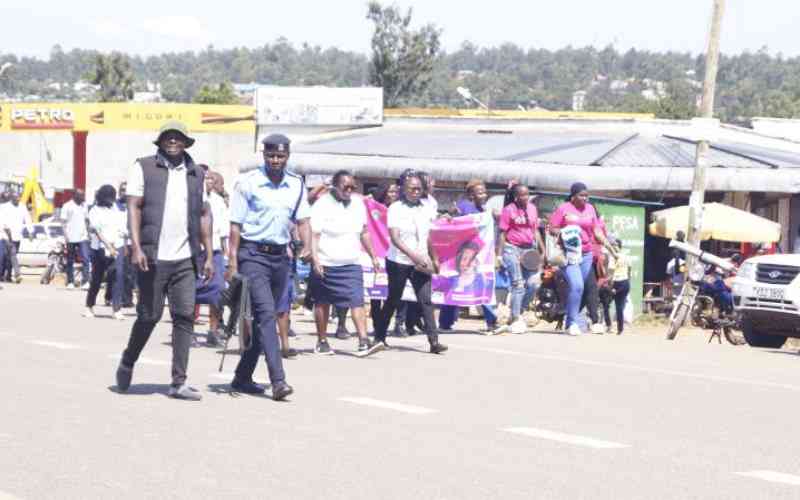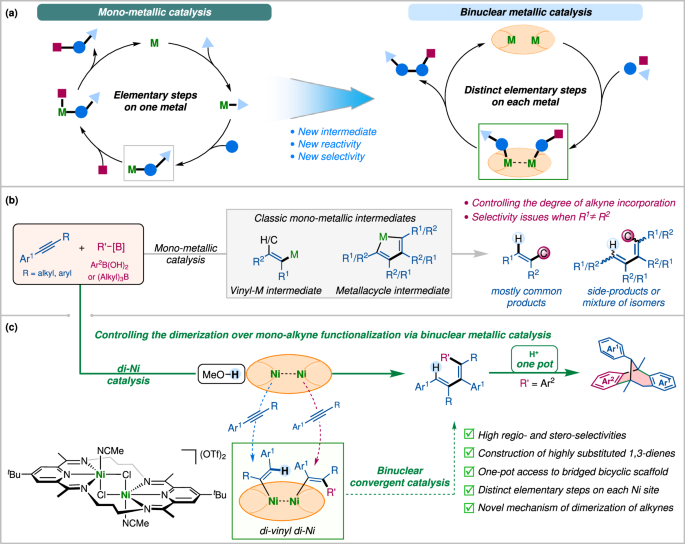Radiation Oncology volume 20, Article number: 45 (2025) Cite this article
To evaluate the impact of smoking on acute and chronic toxicity in early breast cancer patients treated with hypofractionated intensity-modulated radiation therapy (IMRT) and a brachytherapy boost following breast-conserving surgery.
A retrospective study of 638 patients treated between 2009 and 2017, with 566 having recorded smoking status. Acute toxicity was assessed at treatment end and chronic toxicity at least one-year post-treatment, using Common Terminology Criteria for Adverse Events v4.0. Statistical analyses included chi-square tests and relative risk (RR) calculations.
A total of 566 patients were included in the study, with 31.3% being smokers. The cohort was followed for a median of 6 years (range: 1–11 years). Acute toxicity was primarily characterized by radiodermatitis, with 87.6% of patients developing grade 1 and 5.5% experiencing grade 2. No cases of grade ≥ 3 were observed, and 6.9% of patients did not experience radiodermatitis. Bleeding was rare (1.1%) and infections occurred in 2.0% of patients. Regarding chronic toxicity, 67.1% of patients had no fibrosis, while 27.4% had grade 1 fibrosis. Grade 2 and grade 3 fibrosis were observed in 4.9% and 0.6% of patients, respectively, with no cases of grade 4 fibrosis. Edema was present in 8.0%, and 4.4% of patients reported chronic pain. When comparing smokers and nonsmokers, acute toxicity incidence, particularly radiodermatitis, was similar between the two groups. Smokers had a significantly higher incidence of chronic fibrosis (35.6% vs. 24.7%, p = 0.013) and chronic pain (7.9% vs. 3.3%, p = 0.024) compared to nonsmokers. However, there were no significant differences in the occurrence of edema between smokers and nonsmokers (7.9% vs. 8.0%, p = 0.879).
While advanced radiation techniques such as hypofractionated IMRT improve overall toxicity profiles, smoking significantly exacerbates chronic toxicity in breast cancer patients. This study underscores the urgent need for comprehensive smoking cessation programs as part of cancer care, addressing lifestyle factors to improve patient outcomes and quality of life.
Radiation therapy (RT) plays a fundamental role in the adjuvant treatment of breast cancer (BC), offering a significant increase in local control and overall survival [1]. Modern irradiation techniques, such as intensity-modulated radiation therapy (IMRT), reduce the toxicity of adjuvant RT in BC by delivering the dose uniformly throughout the breast while ensuring strict compliance with dose-volume constraints of adjacent organs at risk, including the skin [2]. Furthermore, the widespread use of moderate hypofractionation protocols (40 Gy/15 sessions) has reduced toxicity to the breast while maintaining oncological efficacy [3].
The deleterious effects of smoking are well-known, not only for its carcinogenic impact but also for its negative influence on tumor control, survival, quality of life, and the toxicity of oncological treatments [4, 5]. Previous research has indicated that smoking can worsen the side effects of adjuvant RT in BC. In patients who have received adjuvant 2D/3D RT with conventional fractionation (50 Gy/25 sessions), smoking is associated with a higher risk of complications in breast reconstruction or severe skin reactions [6]. Although the biological mechanism is not fully understood, it appears that inhaled tobacco promotes inflammation and oxidative stress, leading to a hypoxic microenvironment that exacerbates radiation-induced damage [7].
Recent evidence suggests that smoking still has a deleterious effect on breast toxicity in patients treated with hypofractionated adjuvant RT, indicating that the improvement in the breast toxicity profile provided by this fractionation scheme does not fully counteract the negative impact of smoking [8]. Additionally, it is not entirely clear whether the negative influence of tobacco smoking is mitigated when hypofractionated RT is performed using a highly conformal technique such as IMRT and to what extent it does so.
Given the incidence of BC, with over two million cases diagnosed annually worldwide, it is critical to identify not only treatment-related factors that may cause unwanted side effects but also lifestyle habits, especially those that are preventable.
The objective of this study was to evaluate the impact of smoking on acute and chronic toxicity in early breast cancer (BC) patients treated with hypofractionated intensity-modulated radiation therapy (IMRT) and a BT boost following breast-conserving surgery (BCS).
This descriptive, retrospective, longitudinal, and observational study was approved by the local Research and Ethics Committee (code 2020/UEM01). The protocol and the oncological and toxicity outcomes of the entire cohort have been previously published [9]; this is a post-hoc sub-analysis focusing on the impact of smoking on the toxicity profile.
Patients with ductal carcinoma in situ (DCIS) and early invasive carcinomas without indication for elective nodal irradiation (therefore, the PTV-planning target volume-is the volume of the breast) were included. All patients received hypofractionated adjuvant whole-breast forward-planned-IMRT (40.05 Gy in 15 sessions) followed by a single session of HDR-BT boost under local anesthesia on an outpatient basis.
Radiodermatitis at the end of the external RT and hemorrhagic or infectious complications during the month following HDR-BT were defined as acute toxicity. Chronic events, evaluated at least one year after the end of treatment and always according to the physical examination performed at the last follow-up visit to which the patient attended, included fibrosis, breast edema and pain requiring daily analgesia of ≥ 1st step of the analgesic ladder. Only patients with explicitly recorded and graded toxicity in their medical records, using The Common Terminology Criteria for Adverse Events (CTCAE) v4.0 scale, were considered. Patients who had never smoked or had quit smoking more than one year prior to oncological treatment were considered non-smokers. Active smokers or those who had quit smoking in the year prior to diagnosis were considered smokers.
Chi-square tests were used to assess the association between toxicity, its severity, and smoking habits. Additionally, regression analyses were conducted to estimate the relative risk (RR) associated with smoking, adjusting for clinical and treatment variables: PTV volume in cc, maximum PTV dose, minimum PTV dose, PTV D95, PTV D2, prior chemotherapy treatment, hormonal treatment, diabetes mellitus, and obesity. Results were reported as adjusted RR with 95% confidence intervals (CI 95%) and adjusted p-values. An ordinal regression analysis was used to assess the association between smoking and the severity of radiodermatitis and fibrosis (in grades). The model estimated regression coefficients, 95% confidence intervals (CIs), and p-values. Statistical analyses were performed using IBM SPSS v.27, and a p-value of < 0.05 was considered statistically significant.
Between 2009 and 2017, a total of 638 patients were treated according to this protocol. The relationship between tobacco use and toxicity was studied in 566 patients, whose smoking data were known and who were the target of this substudy. Of these, 31.3% were identified as smokers. The clinical characteristics of patients are described in Table 1. The clinical characteristics of both groups (smokers and nonsmokers) were well balanced, except for a slight difference in mean age, this being marginally higher in nonsmokers. The mean follow-up time was 6 years [1–11].
Globally, acute toxicity was similar between smokers and non-smokers. However, chronic fibrosis and pain were more likely to occur in smokers (35.6% vs. 24.7%, p = 0.013, RR = 1.393, 95% CI [1.076–1.802] and 7.9% vs. 3.3%, p = 0.024, RR = 2.271, 95% CI [1.094–4.715], respectively). In a univariate analysis, significant associations were observed between various clinical and treatment-related variables (PTV volume, maximum and minimum PTV doses, PTV D95, PTV D2, prior chemotherapy, hormonal therapy, diabetes mellitus, and obesity) and the evaluated toxicities. For radiodermatitis, diabetes mellitus and obesity were significantly associated with increased risk (RR: 1.077, 95% CI [1.045–1.109], p < 0.001 for both). For post-BT bleeding, obesity showed a high relative risk (RR: 1.70e-11, 95% CI [1.45e-11-1.99e-11], p < 0.001). Regarding chronic toxicity, smoking was associated with an increased risk of pain (RR: 2.271, 95% CI [1.094–4.715], p = 0.028), a larger PTV volume was significantly associated with an increased risk of edema (RR: 1.001, 95% CI [1.000-1.002] p < 0.001), and finally, smoking and a larger PTV volume were significantly associated with a higher incidence of fibrosis (RR: 1.388, 95% CI [1.074–1.794], p = 0.012; RR: 1.001, 95% CI [1.000-1.002] p < 0.001). In the multivariate analysis, smoking, diabetes, obesity and PTV volume were significantly associated with toxicity. Smoking was positively related to the risk of fibrosis (RR: 1.369, 95% CI [1.065–1.760]; p = 0.014) and chronic pain (RR: 3.338, 95% CI [1.461–7.625]; p = 0.004). PTV volume increased the risk of edema (RR: 1.001, 95% CI [1.000-1.002], p < 0.001) and fibrosis (RR: 1.001, 95% CI [1.000-1.002], p < 0.001). Diabetes was also identified as a significant factor associated with an increased risk of fibrosis (RR: 1.670, 95% CI [1.113–2.505]; p = 0.013). Regarding acute toxicity, diabetes and obesity were significantly associated with an increased risk, particularly for radiodermatitis (diabetes: RR 1.049, 95% CI [1.025–1.074], p < 0.001; obesity: RR 1.047, 95% CI [1.016–1.078], p = 0.003). Smoking showed no significant association with acute toxicity outcomes.
After adjusting for these variables, the statistical significance remained for the association between smoking and the risk of fibrosis and chronic pain (RR: 1.369, 95% CI [1.065–1.760]; p = 0.014) and (RR: 3.338, 95% CI [1.461–7.625]; p = 0.004), while no significance was found for acute toxicity, particularly for radiodermatitis (RR: 1.028, 95% CI [0.983 − 0.075]; p = 0.253; adjusted: RR: 1.021, 95% CI [0.978–1.066]; p = 0.348) (Table 2).
When evaluating the severity of fibrosis and radiodermatitis based on tobacco consumption, it was found that smoking was significantly associated with an increased risk of developing fibrosis, particularly in its more severe grades. Smokers were more likely to develop grade 1 and grade 2 fibrosis, with regression coefficients of 3.032 (95% CI [2.612–3.451], p < 0.001) and 5.281 (95% CI [4.135–6.427], p < 0.001), respectively. Regarding radiodermatitis, the majority of patients developed some degree of this toxicity, predominantly grade 1. Among smokers, 168 of 177 patients (94.9%) presented radiodermatitis, while in non-smokers, 359 of 389 patients (92.3%) developed this condition. The ordinal regression analysis showed a coefficient of 0.518 (95% CI [0.118–0.918], p = 0.010), suggesting that tobacco consumption is associated with a higher likelihood of developing more severe grades of radiodermatitis, although this was not statistically significant on a global level (Table 3).
In the realm of BC treatment, adjuvant RT remains a cornerstone for enhancing local control and overall survival. Advanced techniques such as IMRT and hypofractionation have significantly improved toxicity profiles; however, our study highlights a persistent issue: smoking exacerbates chronic toxicity even when advanced radiation protocols or techniques are employed.
Numerous studies have shown the harmful effect of smoking on RT-related BC skin toxicity, most of them in patients treated with non-conformal 2D/3D-RT and/or conventional fractionation. A systematic review of 71 articles, 28 of which focused on this issue, found that overall skin side effects were significantly worse in patients with a history of smoking, although results were conflicting when each type of toxicity was evaluated independently, especially for acute dermatitis, fibrosis, and pain [7]. Sharp et al. identified smoking as a major predictor of severe radiodermatitis, with smokers experiencing a risk up to 2.5 times higher than non-smokers [6], but Hughes et al. [10] found that while smoking did not significantly affect acute toxicity, it did contribute to chronic side effects. This included fibrosis and pain with an incidence of grade (G) 2 and G3 toxicity (including fibrosis, pain, edema, and hyperpigmentation) of 18.2% and 1.9%, respectively. Although the likelihood of side effects in this last study is significantly higher than our previously reported data (fibrosis G2, and G3 of 4.6%, and 0.5%, respectively), probably due to the combination of hypofractionation with IMRT [9], the relationship between smoking and RT toxicity aligns with our findings: the observation of a significant association between smoking and chronic fibrosis and pain but no notable impact on acute toxicity.
In our study, although tobacco consumption was linked to an increased risk of chronic fibrosis, the results for radiodermatitis were more nuanced. Both regression and adjusted regression analyses did not show a significant relationship between smoking and acute skin toxicity. However, ordinal regression revealed that smokers were more likely to develop severe grades of radiodermatitis. This suggests that while smoking did not increase the overall incidence of acute toxicity, it may influence the severity of skin reactions in patients who experienced this toxicity, consistent with previous findings that smoking can exacerbate radiodermatitis.
This finding may be attributed to the low incidence of severe radiodermatitis within our study cohort. The limited number of grade 2 cases, coupled with the absence of grade 3 or 4 cases, likely diminished the power of the analysis to detect significant differences in acute skin toxicity between smokers and non-smokers. Although ordinal regression indicated that smokers had a higher likelihood of developing more severe radiodermatitis, the overall rarity of severe cases may have played a role in the lack of a clear, statistically significant association in the broader analysis. Furthermore, the use of highly conformal techniques, such as intensity-modulated radiation therapy (IMRT), along with the implementation of hypofractionation, may have contributed to the reduced overall toxicity observed in our cohort. These factors help explain why our findings differ from previous studies, which reported stronger associations between smoking and skin toxicity, particularly in cohorts treated with less advanced radiation methods.
However, while advanced radiation techniques such as IMRT and hypofractionation have shown improvements in the overall toxicity profiles of breast cancer treatment [11], our study did not include data on non-smokers treated with 3D RT. Consequently, it remains unclear how these techniques may interact with the long-term toxic effects of smoking. What can be concluded is that smoking remains to be a significant factor contributing to chronic toxicities across all patient groups. However, the precise relationship between smoking and these newer radiation protocols will only be fully understood through comparative studies specifically designed to examine this interaction. Until then, smoking cessation should therefore be a priority in the care of BC patients, particularly those undergoing RT. Integrating smoking cessation programs into standard cancer care could potentially reduce the risk of chronic toxicity and improve overall patient outcomes and quality of life. By reinforcing smoking cessation efforts and providing support for patients to quit smoking, healthcare providers can enhance the benefits of advanced RT and improve long-term quality of life for BC patients [12].
While the study provides valuable insights into the impact of smoking on chronic toxicity after RT for BC, several limitations should be considered. The study is retrospective, which inherently limits the ability to establish causal relationships. The reliance on historical data may introduce biases related to patient recall or incomplete medical records, particularly concerning smoking history, including duration, intensity, and cessation patterns. Furthermore, the cohort studied was relatively homogeneous and may not fully represent the broader population of BC patients, especially those with more varied smoking habits or different treatment regimens.
Another limitation is the difficulty in accurately differentiating between active smokers and recent ex-smokers, which limited the ability to analyze the specific impact of smoking during treatment on radiation-related toxicity. The low incidence of severe radiodermatitis (grades 2–4) in our cohort may also have reduced the power of the analysis to detect significant associations between smoking and acute skin toxicity. This, combined with the focus on a specific patient population treated with hypofractionated protocols, may limit the generalizability of the findings to other breast cancer populations.
In future research, it would be essential to conduct prospective studies with more comprehensive and accurate data collection regarding smoking habits, including self-reported smoking duration, objective measures for smoking status, intensity, and timing of cessation [13, 14]. This approach would allow for a more precise evaluation of how these factors influence both acute and chronic radiation therapy toxicities. By obtaining detailed information about smoking history, we could better understand the dose-response relationship between tobacco consumption and radiation-induced side effects. Such studies would offer important insights into the long-term effects of smoking, helping to refine treatment protocols and potentially leading to more personalized care for breast cancer patients.
Despite these limitations, the importance of this work cannot be overstated. The study clearly demonstrates that even with advancements in radiation techniques, smoking continues to significantly exacerbate chronic toxicity, reinforcing the need for targeted smoking cessation programs in cancer care. By highlighting the persistent risks associated with smoking, this research underscores the necessity of integrating lifestyle interventions into standard treatment protocols.
While advancements in RT such as IMRT and hypofractionation have reduced the overall toxicity of BC treatment, smoking remains a significant factor that exacerbates chronic fibrosis and pain after hypofractionated IMRT in early BC. Our findings underscore the critical need for comprehensive smoking cessation programs as part of cancer care. By addressing lifestyle factors alongside advanced treatment modalities, we can better manage and potentially mitigate long-term toxicities, ultimately improving patient outcomes and quality of life.
No datasets were generated or analysed during the current study.
- BC:
-
Breast cancer
- IMRT:
-
intensity-modulated radiation therapy
- BCS:
-
breast-conserving surgery
- BT:
-
Brachytherapy
- CTCAE:
-
Common Terminology Criteria for Adverse Events
- RR:
-
Relative Risk
- RT:
-
Radiation therapy
- DCIS:
-
Ductal carcinoma in situ
- PTV:
-
Planning Target Volume
- G:
-
Grade
- CI:
-
confidence interval
The research protocol for this descriptive, retrospective, longitudinal study was approved by the Jiménez Díaz Foundation’s Ethics and Research Committee with Medicines (Madrid, Spain) on March 5, 2020. Given the retrospective nature of the study, and the possibility that some patients included in the study may no longer attend the hospital or may have passed away, a waiver for individualized informed consent was requested, which was granted. The investigators strictly adhered to the approved protocol established by the ethical research committee, ensuring accurate completion of data collection forms. The study was conducted in accordance with the recommendations outlined in the Declaration of Helsinki, as revised in successive World Medical Assemblies, and in compliance with Good Clinical Practice Guidelines.
Not applicable.
The authors declare no competing interests.
Springer Nature remains neutral with regard to jurisdictional claims in published maps and institutional affiliations.
Open Access This article is licensed under a Creative Commons Attribution-NonCommercial-NoDerivatives 4.0 International License, which permits any non-commercial use, sharing, distribution and reproduction in any medium or format, as long as you give appropriate credit to the original author(s) and the source, provide a link to the Creative Commons licence, and indicate if you modified the licensed material. You do not have permission under this licence to share adapted material derived from this article or parts of it. The images or other third party material in this article are included in the article’s Creative Commons licence, unless indicated otherwise in a credit line to the material. If material is not included in the article’s Creative Commons licence and your intended use is not permitted by statutory regulation or exceeds the permitted use, you will need to obtain permission directly from the copyright holder. To view a copy of this licence, visit http://creativecommons.org/licenses/by-nc-nd/4.0/.
Díaz-Gavela, A.A., del Cerro, E., Sanchez-Garcia, S. et al. Smoking increases breast toxicity despite adjuvant hypofractionated IMRT in early breast cancer. Radiat Oncol 20, 45 (2025). https://doi.org/10.1186/s13014-025-02614-x
Received:
Accepted:
Published:
DOI: https://doi.org/10.1186/s13014-025-02614-x










